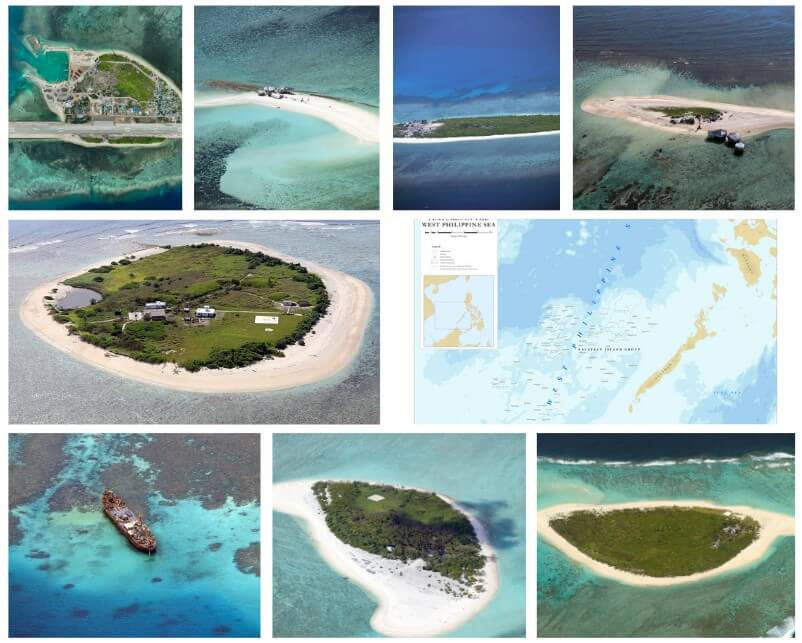
Filipinos can now easily access official information about the Philippines’ sovereign rights to the West Philippine Sea with the recently launched “Not One Inch” website.
The Department of Foreign Affairs (DFA) launched the website on July 12, 2023, to commemorate the 7th anniversary of the Arbitral Award which favored the Philippines’ claims over China’s in the territorial waters dispute.
The West Philippine Sea (WPS) refers to the maritime areas on the western side of the Philippine archipelago, including the Luzon Sea, the waters around and within, and adjacent to the Kalayaan Island Group and Bajo de Masinloc. The Philippines claims an exclusive economic zone (EEZ) in the resource-abundant area; as of 2020, about 7% of the country’s fisheries production emanates from the WPS. Beyond providing a treasure trove of oil and natural gas deposits, the sea contributes to the country’s rich biodiversity and serves as a barrier against flooding and storms.
Territorial Dispute
In 2012, international tensions rose when China began deterring Filipino vessels and boats from the Scarborough Shoal’s waters. A host of intimidating actions from China has repeatedly occurred since then: the superpower has been harassing Filipino fisherfolk, restricting Filipinos from conducting oil and gas explorations, constructing artificial islands in the WPS, fishing within the Philippines’ EEZ, and deploying military vessels in the area. In the face of international controversy, China has claimed that the nine-dash line – a map supposedly confirming its historic rights to the majority of the sea – provides justification for its activities.
Seeing this as a direct attack on the Philippines’ sovereignty, the Philippines took to the International Tribunal for the Law of the Sea to reassert its rightful claim to the WPS and its economic resources. The Office of the Solicitor General represented the Philippines in the legal battle, while information from the DFA, Department of Environment and Natural Resources (DENR), Philippine Navy, the Supreme Court, and the Armed Forces of the Philippines were included in the submissions to the court.
Award Favoring the Philippines
In 2016, the arbitration court ruled in favor of the Philippines. Conferring a unanimous award to the Philippines, the tribunal conclusively decided that China had violated the United Nations Convention on the Law of the Sea (UNCLOS).
Crucially, the tribunal determined that China had no legal jurisdiction over the waters within the nine-dash line – rendering its fishing activities there, illegal. It dismissed China’s claims to an EEZ in the waters, especially surrounding the Itu Aba land mass.
“[The ruling affirmed that] various maritime features relied on by China as a basis upon which to assert its claims in the South China Sea are not islands that generate entitlement to an exclusive economic zone or continental shelf, but rather are ‘rocks’,” asserts the Not One Inch website. The court also censured China’s military presence in the Scarborough Shoal and the environmental destruction caused by the artificial islands.
Continuing Battle
While the Philippines won the case, China refused to recognize the ruling. To this day, China’s military presence continues to loom large in the WPS – a harsh reality that the Philippines is trying to combat through international cooperation.
DFA Maritime and Ocean Affairs Assistant Secretary Maria Angela Ponce said during the launch that Not One Inch was “an important start to gaining a better understanding of the complex issues faced by the Philippines in the South China Sea and the West Philippine Sea”.
To increase public knowledge of the conflict, the DFA’s newly-created website seeks to collate easy-to-read information regarding the 2016 decision. “The website gathers material, many of which is already available through various channels, and organizes them in a useful format, which we hope will be useful for the public in general. We understand that the issue is complex and may be confusing, so this is an attempt to clear some of the fog,” Ponce said.
Emblazoning the Philippines’ legal victory, the website features detailed maps of the West Philippine Sea alongside the Scarborough Shoal and Kalayaan Group of Islands. It also provides a pool of engaging online resources – such as books, exhibits, and even adventure games – that bring the West Philippine Sea to life. The Foreign Service Institute’s explanatory resources on fundamental maritime rights are also available on the website.
DFA noted that the website was made in collaboration with the Office of the Press Secretary, the National Mapping and Resource Information Authority of the DENR, the Philippine Coast Guard, and the Armed Forces of the Philippines Western Command.
Addressing key questions regarding the territorial dispute, the website is a part of DFA’s overall agenda to increase Filipinos’ familiarity with the landmark decision. Site link here:
LOOK: @DFAPHL launched a website to boost knowledge of the country’s sovereign right to the West Philippine Sea. Browse here: https://t.co/frTZB3WhWj
Story upcoming on @GoodNewsPinas_ https://t.co/tPI008CZ7z
— Summer Sanares (@scvannasummer) July 18, 2023
Various efforts to protect the Philippines’ territorial rights in the West Philippine Sea include the Philippine Coast Guard’s offshore vessel Gabriela Silang patrolling the waters and a Filipino scientist’s development of underwater drones to monitor Philippine waters.
SHARE this story with other Filipinos who want to learn more about the West Philippine Sea.
Good News Pilipinas is a Lasallian Scholarum Awardee. TELL US your good news story tips by messaging GoodNewsPilipinas.com on Facebook, Twitter, or Instagram, or e-mailing editor@goodnewspilipinas.com










